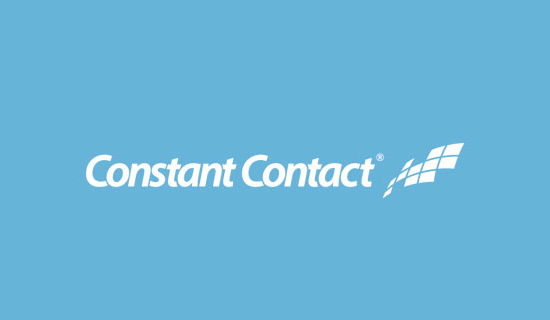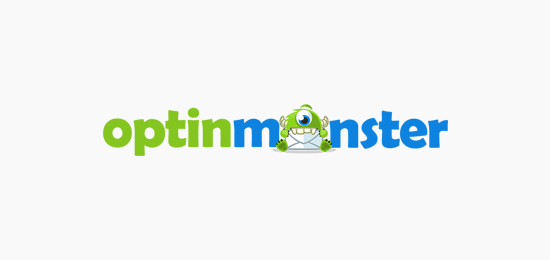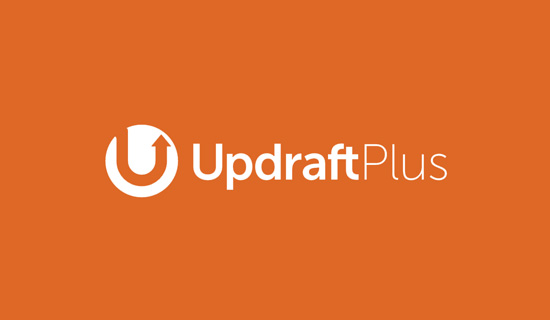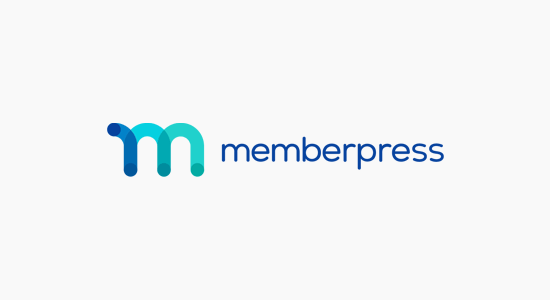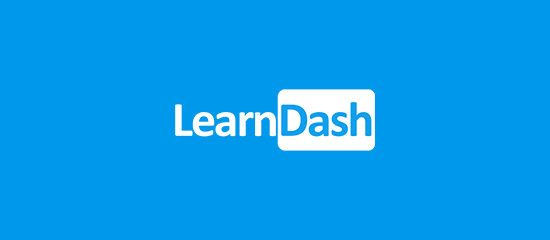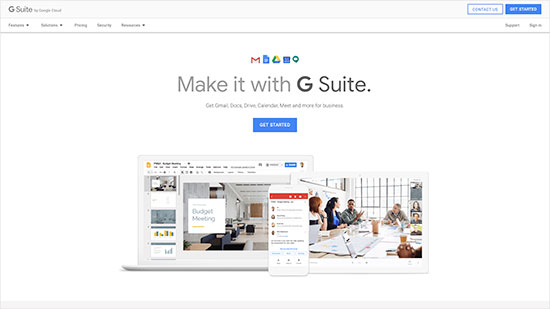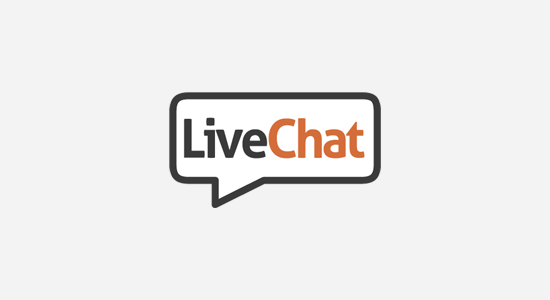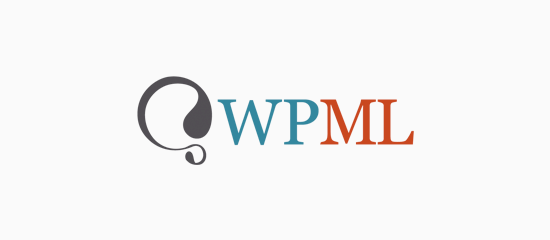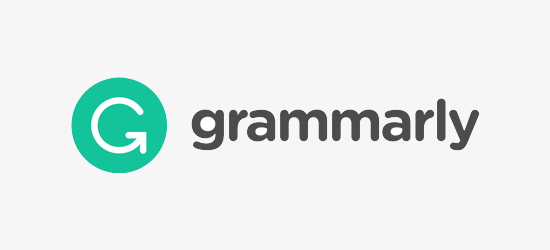Blogwapbd.Tk - Best Social and technical blog in The world
Blogwapbd.Tk best technical tips and local newspaper zone.we share always unique post...
Are Android updates getting faster? Let’s look at the data

If you want the freshest version of Android as fast as possible, the Google Pixel range is clearly your best bet. Historically, other Android manufacturers have been much less reliable. Although some have been faster and more consistent with security and version updates than others. It’s left consumers a little befuddled when buying devices that will see longterm support.
With Project Treble now supported by key Android flagships, in theory updates should roll out to us faster than ever before. It’s now been five months since Android Pie launched — does the data confirm Google’s optimism about faster updates?
Let’s look at the data
The data in the graph below plots the time between an Android version’s release date and the first confirmed report of an OEM rolling out the update to unlocked phones on a global scale. I looked at key devices announced well ahead of a new Android OS announcement, so we can fully assess upgrade times. This list includes the Samsung Galaxy S series, Huawei P range, and LG’s G models.
On average, Nougat updates took about 192 days to reach key devices, while Oreo was slightly faster at 170. Android Pie updates hit devices much faster, averaging just 118 days from Google’s launch to significant OEM rollout. That’s a significant improvement, though we’re still waiting on updates from LG and HTC, which could drag this average back up.
Most manufacturers are faster at providing updates now, but a few are slower. Huawei, Samsung, and Xiaomi were noticeably quicker this time around, bringing updates to key devices before the end of 2018. OnePlus and Sony were especially fast, but they’ve always been speedier than most. Disappointingly, Motorola has rolled out updates to its flagship Z series slower over the last few years.
Small OEMs update their phones faster but major brands are closing the gap
One final point of note. This data doesn’t include older device update times or how manufacturers treat mid-range smartphones. Both of these categories still receive updates notably slower than major flagship launches. However, the situation appears to be improving with some OEMs with the rollout of Android Pie.

Treble and One have helped
Sifting through a huge range of smartphone update articles, there are two key trends that I’ve identified. First, Project Treble has helped major manufacturers update Oreo-based phones much faster than before. Second, Android One allows for much quicker updates for a broader range of consumers.
Looking back at the data, you’ll note that Samsung, Huawei, and Xiaomi sliced their update times by almost half between Nougat and Pie, with the biggest jump coming in the last update. All three manufacturers pushed updates to flagship phones just before 2019. In previous years they delayed updates until late Q1 or Q2 the following year.
This is important because these phones are some of the biggest sellers. The Samsung Galaxy S9, Huawei P20 Pro, and Xiaomi Mi 8 are in a lot of consumer’s hands, and most will now be using Pie. Unfortunately, Google’s distribution numbers don’t include Android 9.0 yet, but we could expect much faster adoption of the latest OS because of this.
Project Treble has cut months of the waiting times for major flagship phones
Outside of big-budget flagships, many lower cost phones already run Android Pie too. These phones are predominantly Android One models, including those from Nokia and Xiaomi. Interestingly, LG already has a 9.0 Pie update for the LG G7 One, while the regular LG G7 ThinQ model is still waiting for its global rollout. Similarly, the HTC U11 Life has Pie ahead of the flagship HTC U12 Plus.
The reason this initiative provides updates so fast is Android One devices run a stock OS. There’s no custom skin, software, or apps to update and test for compatibility, unlike handsets with more complex features from Samsung and others. Combined with Treble simplifying the driver layer, it’s quick for manufacturers to grab Google’s update and flash it to their devices.

There’s still more to be done
The number of key Pie updates already out so far paints a good picture for Google’s latest OS version. However, there are still major differences between the fastest and slowest manufacturers — a gap we would obviously like to see close further. Not to mention that mid-range and older devices are still often quickly forgotten about. In an ideal world, we’d like to see all smartphones receive updates for longer than two years.
The real test for Android will come with the next major OS update. Can manufacturers provide consistent security updates, as well as key OS upgrades? Will last year’s devices continue to see support at this pace? Will Treble finally help to end Android’s long-running issue with fragmentation?
Source: Android Zone
The post Are Android updates getting faster? Let’s look at the data appeared first on TuneMaster.ml.
TicWatch C2 review: An (almost) perfect Pixel Watch blueprint
It’s taken just over two years for China’s Mobvoi — ostensibly an AI company — to cement its place as one of the hottest smartwatch makers on the planet.
Editor’s Pick
From ultra-affordable Wear OS watches to innovative, high-end wearables, Mobvoi’s TicWatch range boasts some of the best smartwatches money can buy.
That’s why I was really excited to try out the latest member of the TicWatch family, the TicWatch C2.
Intended to fill a niche between the fully kitted out TicWatch Pro and the more affordable and only recently announced TicWatch S2 and E2, the TicWatch C2 also has a legacy to live up to as the follow-up to the TicWatch Classic (aka the “tickleable” TicWatch 2), the first watch from the brand to reach a global market.
Can the TicWatch C2 live up to the brand’s growing reputation for delivering the best Wear OS smartwatches? Find out in our Mobvoi TicWatch C2 review!
Mobvoi TicWatch C2 review notes: I’ve been using the TicWatch C2 (model WG12036) as my main smartwatch for just under a month, running Wear OS 2.2 based on Android 8.0 Oreo. The watch was connected to a Google Pixel 2 XL for the first two weeks. I switched to a Pixel 3 XL for the remainder of the review.
Show More
Design

Pitched as a perfect blend of sleek, premium style and an elite smartwatch with all the best Wear OS features, the TicWatch C2 certainly achieves the former thanks to its stainless steel finish and unfussy design.
The C2 comes in three color options: black, platinum, and rose gold. I tested the black variant for this review, which is undoubtedly the least ostentatious of the three. I also handled the other two briefly at the C2’s launch in London.
While the silver and black models are identical aside from the finish, the rose gold variant sports a curvier look with rounded physical buttons, softer edges, and brings the display almost flush with the surrounding bezel.
The TicWatch C2 is a stunning timepiece that oozes class.
The rose gold version is also thinner than the black and platinum models, coming in at just 12.8mm thick. Mobvoi says the rose gold model is built for slimmer wrists, but you only have to look at its advertising to see that it wants the variant to appeal to women.
While catering to different builds is worth applauding — especially as smartwatches tend to be quite bulky — that the thinner version is only available in a shade of pink is a little cynical. I’m sure there are plenty of women (or anyone with thinner wrists, for that matter) who would prefer a thinner smartwatch with a more traditionally gender-neutral color option.
The underside of the TicWatch C2 ditches the steel in favor of plastic, but it blends in well enough to not spoil the aesthetic. Here you’ll also find the heart rate sensor and magnetic charger contacts. The heart rate sensor juts out more than I’d like, and it leaves a mark on your wrist, but it never caused me any discomfort, even during or after exercising.

The physical buttons sit on the right side of the watch, with a microphone in between for Google Assistant voice commands. You’ll have to live with verbal responses coming only from your phone, as unlike the TicWatch Pro, the C2 doesn’t have a speaker.
You also don’t get a fancy rotating crown like you’d find on the Skagen Falster 2, but the two hardware buttons are nice and tactile and compliment the touchscreen controls. You can also remap the lower button, but I’ll get more into that in the software section.
One thing I don’t particularly like is the large orange dot engraved into the center of the top button as it sticks out like a sore thumb when viewing the watch from the right side.
Read more
I also wasn’t completely sold on the included watch straps. Despite “genuine leather” being embossed on the underside, the straps have a very plastic feel. This eased a little after a few weeks with the watch, but they still don’t quite match the quality of the watch itself.
The black and platinum models have 20mm straps, while the pink gold version has 18mm straps. Mobvoi sells silicon straps (say that fast ten times!) compatible with the two thicker models, but if you like metal straps you’re currently fresh out of luck.
While I have a few nitpicks here and there with the TicWatch C2’s design, in general this is a stunning timepiece. It’s incredibly comfortable, subtle enough to suit any outfit or occasion, and oozes class.
Hardware and performance

Regardless of which model you buy, the TicWatch C2 sports a 1.3-inch AMOLED display with a 360 x 360 resolution.
This is pretty standard stuff for modern smartwatches at this point, but the C2’s AMOLED display still impresses with deep blacks and bold, contrasting white text and vibrant colored icons. The high contrast AMOLED panel also ensures viewing angles are great even in direct sunlight.
The most significant hardware downgrade is that the C2 lacks of the Pro’s celebrated dual-display technology. Without the Pro’s secondary FSTN LCD display, your only options are an always-on watch face outline or a completely black screen when the watch isn’t awake. Inevitably, this has a huge impact on battery life.
Editor’s Pick
The 400mAh battery inside the C2 is, again, pretty standard for a smartwatch of this size.
The most I managed to squeeze out of the cell was two days on a single charge with very light usage (only occasionally checking incoming notifications), and with the always-on display and constant heart rate monitoring switched off.
When used more frequently with those settings on, the C2 usually makes it through around a day and a half. If you take it for a long morning run or a lengthy gym session, you might end up reaching for the charger that same night. Generally, however, the C2 offers decent, if unremarkable battery life that can’t hold a candle to the TicWatch Pro’s maximum of 30 days on a single charge.
Other notable hardware features include NFC support for Google Pay, GPS/GLONASS/Beidou location tracking, and 4GB storage and 512MB RAM. The C2 is also IP68 rated for splash- and sweat-proofing, but you absolutely shouldn’t take it for a swim.
All in all, it’s a nicely kitted out Wear OS device that ticks all the right boxes — with one notable exception.
Despite Qualcomm having finally released a new flagship smartwatch platform — the Snapdragon Wear 3100 — the TicWatch C2 is powered by the ubiquitous Snapdragon Wear 2100 chipset, which at time of writing is a month away from its third birthday.
A three year old chipset is powering a flagship smartwatch in 2019.
The TicWatch C2 suffers from lag when first booted up and occasionally when using apps (especially third-party apps). On the whole, this isn’t something you’ll notice for swiping away notifications, skipping tracks on Spotify, tracking your workouts, or anything in regular day-to-day use.
However, Wear OS has evolved by leaps and bounds in the past year, and there’s always the risk the next major software update will have a much larger impact on performance. When buying any modern tech product, it’s often best to mitigate the threat of obsolescence by seeking the most up-to-date hardware possible. Unfortunately, the C2 can’t quite deliver that.
It should be noted, however, there are valid concerns that even Qualcomm’s latest wearable SoC doesn’t stack up to wearable chips from Samsung, Apple, or even Fitbit.
Related: Withings Move and Move ECG hands-on
Ignoring ultra-premium options like the $1,000 Montblanc Summit 2 and Louis Vuitton’s latest, the only other Snapdragon Wear 3100-powered smartwatch to hit the market so far is the $255 Fossil Sport, and reviews have suggested the processing leap isn’t drastic enough to deliver a significant boost to either battery life or performance.
There’s every possibility Mobvoi made the right call here to keep the C2’s price down. That said, it’s still worth bearing in mind that a three year old chipset is powering a flagship smartwatch in 2019.
Software and fitness tracking

Prior to strapping the TicWatch C2 onto my wrist, I hadn’t actually taken Google’s recent Wear OS redesign for a spin. Considering how much I didn’t care for Google’s OS in its original Android Wear guise, I wasn’t expecting miracles, and while it’s still far from perfect, I was blown away by just how much Wear OS (now in V.2.2) brings to the table.
Swipes and taps now take you directly to the most important features like notifications, quick settings, and Google Assistant. Much like Google’s launcher on Pixel phones, the search giant’s almost forms the core of the Wear OS experience, acting as both a voice assistant and a go-to feed with all your appointments, reminders, and available at a quick glance.
If you’ve tried out Wear OS 2.2 you already know all of this, but it’s worth highlighting how streamlined and “pure” the OS experience feels on the TicWatch C2. If you took away the TicWatch-branded watch faces and Mobvoi’s four pre-loaded fitness-focused apps, you’d be forgiven for thinking you’d accidentally stumbled upon a some kind of Google Pixel Watch prototype.
Related: 10 best Wear OS watch faces
This might be a bit of a turn-off if you like your watches jam-packed with extra software features, but there’s not much you can’t find on the Play Store. All the basics are here, including Google Pay, so you won’t have to fumble around for your card or phone when buying your groceries or on the subway.
The only other giveaway that this isn’t a Google-made product is the lower physical button and the swipe left gesture, both of which take you straight to Mobvoi’s TicHealth app instead of the new and improved Google Fit like other Wear OS devices. Not only can you remap the physical button to whatever app you like in Settings > Personalization, you can also toggle between Google Fit and TicHealth as your default tracker by long pressing after swiping to the left — an option only recently added to TicWatch’s smartwatch range.
While you can ignore it completely in favor of Google Fit, the TicHealth app is clearly intended to act as the C2’s main fitness app. TicHealth links directly into the Health Center inside the Mobvoi smartphone app, but it improved much since our other TicWatch reviews. It’s designed to cater for TicWatch users and Mobvoi’s wider smart home range, but you’d be forgiven for thinking it’s really there to peddle ads.
Thankfully, you can forget the smartphone app even exists as all of the crucial fitness data can be accessed directly on the watch. Visually the TicHealth app is very Apple-esque, with simple diagrams and a circular, color-coded chart used for tracking your daily steps, workouts, and active hours. You can also set step goals and goal or activity reminders, which if you’re like me are great nudges to get you off your backside every now and again.
There are three other pre-installed TicWatch health-centric apps that link into TicHealth — TicExercise, TicPulse, and TicRanking.
TicExercise helps you track your distance, heart rate, speed, and more, for outdoor runs, outdoor walks, indoor runs, and cycling presets. If you want more granular results you’ll need the Health Center in Mobvoi’s phone app, but generally there’s enough in the watch app to monitor your workouts. Of course, if you’re more of a dedicated fitness buff, there are plenty of other Wear OS-compatible health apps available on the Play Store.

TicPlus, meanwhile, links in with the heart rate monitor. You can set it to track your heart rate over 24 hours for better overall results, but it impacts the C2’s battery life. The heart data is also compatible with Google Fit, Runkeeper, and Strava.
Finally, TicRanking pits you against other TicWatch users in your nearby area as you compete to gain the highest step count. As with the rest of Mobvoi’s app suite, there are plenty of privacy prompts to avoid sharing any data without your permission.
Mobvoi has promised the TicMotion features of the TicWatch E2 and S2 will also be come to the C2 and the rest of its Snapdragon Wear 2100-powered wearables in the future.
Price and the competition

I really like the TicWatch C2 — so much that I’m still wearing it while writing this review, long after I’ve finished testing it.
If Google doesn’t have a “Pixel Watch” waiting in the wings already, I suggest it looks to the C2 for inspiration.
The fittingly “classic” design, extensive list of hardware features, and the clean software experience remind me a lot of Motorola’s short-lived, but much-loved Moto 360 series — simple, stylish, and timeless (pun intended). It’s also priced perfectly at $199 (179 pounds if you’re in the U.K., like me), making it one of the best value Wear OS smartwatches on the market.
Read more
There are a handful of lingering quibbles, however.
The TicWatch Pro’s dual-display is such a killer feature and it’s hard to argue its not worth the extra $50.
The aging Snapdragon chipset is still a concern. In spite of the agonizingly slow adoption of Qualcomm’s latest wearable platform and its reported diminishing returns, the C2’s processor is so long in the tooth at this point that you can see it dangling out of the horse’s mouth.
If Google doesn’t have a ‘Pixel Watch’ waiting in the wings, the C2 would make a mighty fine blueprint.
Seemingly every Wear OS smartwatch debuted at CES 2019 is sticking with the Snapdragon Wear 2100, so the fragmentation issue isn’t going away any time soon.
Unfortunately for the TicWatch C2, Wear OS isn’t the only player in town. The Apple Watch Series 4 is far and away the best smartwatch money can buy. For Android phone users, the Samsung’s Exynos/Tizen OS-powered Galaxy Watch still has the edge.
In the land of Wear OS, Mobvoi’s TicWatch brand is currently the undisputed king, and the TicWatch C2 is a more than worthy addition to its burgeoning royal family.
What do you make of the TicWatch C2? Do you still prefer the TicWatch Pro, or are you waiting for the E2 and S2? Let us know in the comments.
Source: Android Zone
The post TicWatch C2 review: An (almost) perfect Pixel Watch blueprint appeared first on TuneMaster.ml.
Google Assistant was everywhere at CES 2019

Google had a huge exhibit space at CES 2019 in Las Vegas (complete with its own roller coaster) and it made plenty of announcements concerning the Google Assistant. Let’s take a look at the major ones made by both Google and third-party companies this week at CES.
Google: New features and a new 1 billion device milestone

While Google didn’t announce any new first-party hardware with Google Assistant during CES 2019, it said it expects Assistant to be available on 1 billion devices by the end of January. That’s a huge jump from the 500-million-device milestone it achieved in May 2018.
Google also announced more features for Assistant this week, including integration with Google Maps, and how it can help you check into your airline flight. Android users will get to use Google Assistant to respond to text messages on your phone via SMS, WhatsApp, Messenger, Hangouts, Viber, Telegram, Messages, and more.
If you own a Google Home smart speaker or Smart Display, Google announced a potentially handy new Assistant feature: Interpreter Mode. It will offer audio translations of someone else’s language into your local language on Google Home speakers, and text translations on Smart Displays.
Also, Android phones will soon get an update let people access features on Google Assistant without leaving the lock screen, like search results, setting up alarms and more.

Finally, Google announced Google Assistant Connect at CES 2019, which will let companies connect to Assistant-based smart speakers or smart displays without including their own speakers and microphones. For example, the smart speaker could connect to an e-ink display to show information like the current weather conditions. More information on Assistant Connect will come later this year.
Google Assistant finally begins its rollout for Sonos speakers
In 2017, Sonos announced some of its smart speakers, including the Sonos One and Sonos Beam, would add support for Google Assistant in 2018. However, the company later revealed the support update would be delayed until 2019. This week, Sonos announced the Google Assistant update for those speakers had finally started rolling out and will be available for all of them in the coming weeks.
In addition, older Sonos Wi-Fi-connected speakers will also get an update so Google Assistant can recognize them. If you own an Assistant-based smart device, you can use voice commands to tell those speakers to play music.
Samsung announces Google Assistant support for its smart TVs

During its CES 2019 press event, Samsung announced if you have a Google Assistant device like a Google Home speaker, you will be able to use voice commands on select Samsung smart TVs. The support will be rather limited, as you will be able to use voice command to turn the smart TV on or off, along with changing channels or the input source. You can also turn the volume up and down with a Google Assistant voice command, or launch specific smart TV apps.
Samsung says its 2019 smart TVs will support this, and hinted that older models could get this support in the future. Samsung will also add this kind of support for Amazon’s Alexa and for its upcoming Galaxy Home smart speaker, which will use the company’s Bixby digital assistant.
Philips Hue adds more Google Assistant support
Philips Hue, the smart bulb and lighting division of Philips, announced a new Google Assistant-based feature for its products called Gentle Wake Up at CES 2019. If you have Philips Hue bulbs in your bedroom, this feature will brighten them 30 minutes before your alarm goes off in the morning, to make it easier for you to wake up.
This feature will also allow you to use Google Assistant to set up effects to make you sleep better. For example, you can use commands to change the normal Hue lights to a softer and warmer tone at night so you can fall asleep faster. This update will start rolling out in March.
Lenovo’s Google Assistant-based Smart Clock
Lenovo launched its Google Assistant-based Smart Display speaker in late 2018. For its CES 2019 product lineup, the company announced a second Assistant-based speaker with a display. The Lenovo Smart Clock is exactly what it sounds like — an alarm clock with a 4-inch display. Of course, it can show the current time, but the display can also show upcoming alarms, calendar events and any Assistant voice commands you give it.
The clock has a fabric-lined 6-watt speaker with two passive radiators, along with Dolby’s noise reduction technology. There’s no camera on board, so you can’t make video calls, but you can still use it to make voice commands to control smart home devices, such as Philips Hue bulbs in the bedroom. It will go on sale later this spring for $79.99.
The Anker Roav Bolt will bring Google Assistant to your car

The folks at Anker used CES 2019 to announce a new accessory for your vehicle called the Anker Roav Bolt. It basically makes easier to use Google Assistant in your car. You will need an Assistant-based smartphone in the car as well. You then plug the Bolt into your vehicle’s cigarette lighter port and connect it to your car’s stereo with Bluetooth or, if available, an AUX cable. Finally, you connect the device to your phone to start using Google Assistant voice commands, such as making calls, getting directions, play music and more.
The Anker Roav Bolt also has two USB ports so you can charge your phone while you use it for voice commands. It will go on sale sometime in February for $50.
Verizon HumX will help you in your car with Google Assistant

During CES 2019, Verizon Wireless announced the HumX, its 4G LTE device that connects to your car, will add Google Assistant support later in 2019. HumX will let you use Assistant-based voice commands to locate your vehicle on your smartphone, and access your trip history. You can also get information about your current fuel level, learn how long it will take to get to work, and more. Current second generation HueX owners will get a software update to add Google Assistant support later in the year. Verizon will sell the version of HumX with Assistant out of the box during the first quarter of 2019. It will cost $69, with a $15 monthly service fee.
House of Marley reveals environmentally friendly Google Assistant speaker

House of Marley is dedicated to releasing environmentally friendly audio products, and announced its first smart speaker at CES 2019. It’s called the Get Together Mini, and uses Google Assistant for voice commands. It also supports multi-room music with Google Cast and can charge other devices. More importantly, the speaker is made of materials such as bamboo, recycled aluminum, organic cotton, and hemp-based fabric that definitely make a difference for your carbon footprint. The speaker is scheduled to go on sale in August for $199.99.
Kohler Verdera Voice Lighted Mirror with Assistant announced
Well-known kitchen and bathroom company Kohler announced this week at CES it is expanding the reach of its Verdera Voice Lighted Mirror. Previously, the mirror supported Amazon’s Alexa, but at CES 2019 Kohler said a version supporting Google Assistant will release in the fourth quarter of 2019.
Like the Alexa version, the Google Assistant models of the Verdera Voice Lighted Mirror will be able to take voice commands to control the amount of light from its dimmable LEDs. It also has two microphones and embedded speakers that are in a hermetically sealed casing. This will allow owners to use commands to get the latest news, play music or do anything else that an Assistant-based speaker can do. The price will be on the high side, with the 24-inch version of the mirror selling for $1,249, the 34-inch version selling for $1,499 and the 40-inch edition priced at $1,624.
KitchenAid and GE reveal Assistant-based displays for the kitchen

We are seeing more and smarter home devices announced for the kitchen, and Google Assistant is making entries into that part of the home as well. At CES 2019, the KitchenAid Smart Display was revealed. It has a 10-inch display, looks similar to the Google Home Hub, and similarly will respond to Assistant-based voice commands, along with showing content. However, this KitchenAid Smart Display will have an IPX5 resistance rating, which means it should work even if you splash some water on it while cooking.
The KitchenAid Smart Display will also pre-install the Yummly recipe app, so you can quickly find something great to cook. Unfortunately, it looks like this display won’t release until the second half of 2019, and it will be a bit expensive. The company says it will cost between $200 and $300.

GE is also launching a kitchen smart display, and it’s much bigger than the KitchenAid device. As we saw at CES 2019, the GE Kitchen Hub is a full Android device, running on a huge 27-inch display. It’s designed to sit above your stove like a microwave, and you can use it to access cooking videos, recipes, and more. It also has two cameras; one is on the front for take video calls, and one over the oven, so you and anyone else can see what you are cooking. The device also has an exhaust vent at the bottom for removing the smoke from your stove while cooking.
Since it is a full Android device, you can also run any apps on it, so you can watch Netflix while you cook, or listen to an Audible audiobook. There’s no word on a water resistance rating, so don’t splash anything on it. The GE Kitchen Hub goes on sale in May for either $1,199 with a matte finish or $1,399 with stainless steel.
Dish to add Google Assistant into its Hopper DVR

Many Android TV-based smart televisions already support Google Assistant, either directly or indirectly. Now the satellite TV provider Dish is expanding its use of Assistant even more in your living room or media room. At CES 2019, it revealed plans to integrate Google Assistant into its Hopper set-top DVR boxes. If you have one, you can use your voice-based remote to ask Assistant to give you the latest news, weather and sports course, and it will also allow you to control any other smart home devices you might have in your house. This support is also coming to Dish’s Joey and Wally set-top boxes as well in an update in the coming months.
Google Assistant was a huge part of CES 2019, and these were just the highlights of a busy week of Assistant-based product and feature announcements at the show?
Source: Android Zone
The post Google Assistant was everywhere at CES 2019 appeared first on TuneMaster.ml.
24 Must Have WordPress Plugins for Business Websites in 2019
Looking for the best WordPress plugins to take your business to the next level in 2019?
There are over 54,226 WordPress plugins that you can choose from. This makes it extremely overwhelming for new users to find the right plugin for their website.
We are often asked by readers for the best WordPress plugin suggestions for SEO, social media, backups, speed, etc.
Being the largest WordPress resource site, our experts test over thousand free and premium WordPress plugins every year, so we can make it easy for our users (you) to find the best solutions.
Having the right set of WordPress plugins and tools can help you grow your online business. In this article, we have shared our expert pick of the must-have WordPress plugins for business websites in 2019.

Note: these are the plugins that our team installs when we start a new blog or make a new website for our own businesses.
1. WPForms
Every website needs a contact form because it makes it easy for your visitors to get in touch with you. WPForms is the most user-friendly contact form plugin for WordPress.
This drag & drop online form builder allows you to easily create contact forms, email subscription forms, online order forms, payment forms, user registration forms, surveys, polls, and basically all other types of online forms with just a few clicks.
WPForms integrates with all popular marketing and payment platforms, so you can build powerful forms in less than 5 minutes.
We use it on WPBeginner and all of our other websites, but we’re not alone. Over 1 million websites use WPForms, and they have consistently maintained a 4.9 out of 5 star rating average for over 2 years now.
There’s a free WPForms Lite version available for those who are looking for a simple solution.
If you are a seriously looking to grow your business, then we recommend getting the Pro version because it comes with all the powerful features you need to boost your lead generation efforts. Use this WPForms coupon to get 50% off your purchase.
2. MonsterInsights
MonsterInsights is the best Google Analytics plugin for WordPress. It allows you to “properly” connect your website with Google Analytics, so you can see exactly how people find and use your website.
The best part is that it shows you all the important stats that matter right inside your WordPress dashboard.
You can then optimize your website accordingly to increase your traffic, subscribers, and revenue. We have detailed guides on how to install Google Analytics in WordPress, how to use Google Analytics to enable eCommerce tracking, and how to track user engagement.
MonsterInsights has a free version, but the true power of it only unlocks when you upgrade to the Pro version.
You can use our MonsterInsights coupon to get 50% off your purchase.
MonsterInsights is used by over 2 million websites.
3. Yoast SEO
SEO helps you get more visitors from search engines to your website. While WordPress is SEO friendly out of the box, there is so much more you can do to increase your website traffic using SEO best practices.
Yoast SEO is the most popular WordPress plugin of all time. It is a comprehensive WordPress SEO solution with all the features and tools that you need to improve your on-page SEO.
It helps you add meta tags, generate sitemaps, connect your site to Google Search Console, optimize it for social media, and more.
For complete SEO setup on your website, follow our ultimate WordPress SEO tutorial for beginners with step by step instructions.
4. Constant Contact
Email is the most effective and most reliable marketing tool at your disposal as a business owner. It allows you to stay in touch with your users even after they leave your website. This is why we recommend every business owner to start building an email list right away.
Constant Contact is one of the most popular email marketing service providers in the world.
Their platform allows you to build an email lists and send beautiful email newsletters to your subscribers.
It is quick and easy setup for non techy users. It also works well with popular lead generation plugins for WordPress like OptinMonster and WPForms.
Alternatives: Drip and ConvertKit are good alternatives if you want something more advanced, but they are more pricey.
5. OptinMonster
OptinMonster is the most popular conversion rate optimization software in the market. It allows you to convert abandoning website visitors into email subscribers and customers.
This WordPress plugin and application helps you get more email subscribers, fast.
OptinMonster comes with pre-made high-converting opt-in forms that you can easily customize with their drag & drop builder. Their powerful display targeting features allow you to personalize the campaigns for each user, so you can show the right message at the right time.
It’s a great solution for bloggers, business websites, and eCommerce websites. Basically if you want to make more money from your website traffic, then you need OptinMonster.
It helps you recover abandoned cart sales, convert website visitors, and grow your email list. Read these case studies to see how much success other businesses are having by using OptinMonster.
We use OptinMonster on WPBeginner and our other websites.
6. Sucuri
Security should be a top priority for all online business owners. Sucuri offers a WordPress security plugin and web application firewall that is probably one of the best protection you can get for your site.
They monitor and protect your site from DDoS, malware threats, XSS attacks, brute force attacks, and basically every other type of attack. If you don’t have a firewall on your website, then you need to add one today.
To learn more on how to strengthen the security of your website and protect your business, see our ultimate WordPress security guide with step by step instructions for beginners.
Sucuri help us block hundreds of thousands of attacks every month on WPBeginner.
7. UpdraftPlus
UpdraftPlus is the most popular WordPress backup plugin on the market. It allows you to set up automatic backups and safely store them on a remote location like Google Drive, Dropbox, S3, Rackspace, FTP, email, and more.
It also makes it super easy to restore your website from a backup. Their base plugin is free, but they also have a paid plan with extra features and priority support.
Alternative: BackupBuddy and VaultPress (Jetpack Backups) are also excellent solutions, but they are paid only.
8. WP Rocket
WP Rocket is the best WordPress caching plugin on the market. It allows you to instantly improve your WordPress website speed and performance with no technical skills required.
It automatically turns on recommended WordPress caching settings like gzip compression, page cache, and cache pre-loading. You can also turn on optional features like lazy loading images, CDN support, DNS pre-fetching, minification, and more to further improve page load times.
This is by far the easiest and most beginner friendly caching plugin. The only downside is that it’s paid only.
Alternative: WP Super Cache is free, but it’s not as powerful or easy.
9. Beaver Builder
Beaver Builder is the best drag and drop page builder for WordPress. It allows you to easily customize your website design and create custom page layouts without writing any code.
Business owners love it because it lets them create completely custom landing pages within minutes without having to hire a developer.
Alternative: Divi plugin is a great alternative.
10. MemberPress
MemberPress allows you to build online communities and membership sites using WordPress. It is the best WordPress membership plugin in the market.
You can create subscriptions and restrict content to users based on their subscription plans. It works with all popular payment solutions and plays nicely with online stores using WooCommerce. For detailed instructions, see our guide on how to make a membership website in WordPress.
11. CSS Hero
WordPress themes rely on CSS for the visual appearance of your website. If you want to make customization to your theme, then you will have to learn CSS. This can be time-consuming for a business owner.
CSS Hero is a WordPress plugin that allows you to customize any WordPress theme without writing a single line of code. Check out our review of how CSS Hero makes WordPress customization easy for more information.
It’s not a drag & drop page builder like BeaverBuilder that helps you build custom layouts. Rather it helps you customize any WordPress theme available in the market within minutes to match your needs.
12. SeedProd
SeedProd is the best WordPress maintenance mode and coming soon page plugin that helps you collect leads and grow your followers even when your website is not available.
If your site is under construction, then you can use it to create beautiful coming soon landing pages. It includes features like integration with your email marketing services, countdown timer, social media integration, and dozens of templates to choose from.
13. LearnDash
LearnDash is the best WordPress LMS plugin to create and sell online courses from your WordPress website. It has a drag and drop course builder that allows you to quickly add lessons, quizzes, and assignments to build your course.
For detailed step by step instructions, see our guide on how to create online courses in WordPress using LearnDash.
14. G Suite
G Suite is a suite of web applications like email, docs, spreadsheets, etc. Created by Google, this powerful set of office applications is cheaper, easy to deploy, and hassle free.
It allows you to save costs on software licenses, hardware, hiring IT staff, managing backups, and more. Most importantly it allows you to use professional email addresses with your own business domain name right inside Gmail.
15. SEMRush
SEMRush is an all-in-one marketing toolkit for digital marketing professionals and business owners. It comes with powerful tools to help you improve your SEO, paid traffic strategy, social media, and content & PR strategy.
It also helps you gather competitive intelligence on your competitors, so you can outrank them and dominate your industry.
It helps you do keyword research, backlink audit, track brand mentions, spy on competitors, discover best-performing posts on social media, ad strategy analysis, and more.
These short paragraphs are not enough to describe the true power of SEMRush. It’s a must have tool in our list for serious business owners.
Alternative: Ahrefs is an excellent alternative.
16. LiveChat
LiveChat Inc is the best live chat support software for businesses and e-commerce websites. It is super easy to use and allows you to quickly add live chat on your WordPress website.
It has tons of customization options, and it comes with a mobile app, so you can stay connected while on the go.
It integrates with your existing support software, CRM, email marketing, and other tools. Most importantly, it loads fast and offers a great user experience.
17. Pretty Links Pro
Pretty Links Pro is one of the best link management plugins for WordPress. It allows you to easily manage affiliate links while making it easy make your affiliate links short and memorable for sharing.
It is the perfect tool for affiliate marketers, podcasters, business owners, and others who want to easily create short URLs in WordPress.
18. Shared Counts
Shared Counts is the best WordPress social media plugin that allows you to easily add beautiful social sharing buttons on your website.
It also shows share counts, which helps you add social proof to your website.
While there are many paid solutions available, this free plugin beats them all in code quality and performance.
We use SharedCount on a lot of our website because it offers an easy out of the box solution for both beginners and developers.
19. WP Mail SMTP
By default, WordPress uses the PHP mail function to send emails. The problem is that either WordPress hosting companies don’t have this feature setup properly, or they block it to prevent abuse.
This basically means that you and your users may not receive important email notifications from your WordPress site.
WP Mail SMTP solves this problem by sending WordPress emails using a proper SMTP mail server. To learn more, see our article on how to fix WordPress not sending email issue.
20. Insert Headers and Footers
While managing your WordPress site, you may sometimes need to add code snippets to your WordPress header or footer for verification, inserting ad retargeting scripts, etc.
Insert Headers and Footer allows you to easily add code snippets to your WordPress site without editing your theme files. Take a look at our tutorial on how to add header and footer code in WordPress.
This free plugin is extremely handy for business owners.
21. TablePress
For a long time WordPress editor didn’t have an option to create tables in your posts or pages. The new WordPress block editor comes with a table block, but it lacks many features.
TablePress solves this problem by allowing you to add beautiful tables to your website. It keeps your table data separate from your posts and pages which means you can embed the table anywhere and update it from one single location.
Most importantly, you don’t have to write any HTML or CSS. See our guide on how to easily create tables in WordPress.
22. WPML
By default, WordPress does not allow you to easily create a multilingual website. This is a challenge for businesses who cater to a multi-lingual customer base in different geographic locations.
This is where you’ll need WPML. It is a WordPress multi-lingual plugin that allows you to easily create multi-lingual websites with WordPress.
It is very easy to use, SEO friendly, and helps you easily create content in different languages.
23. WooCommerce
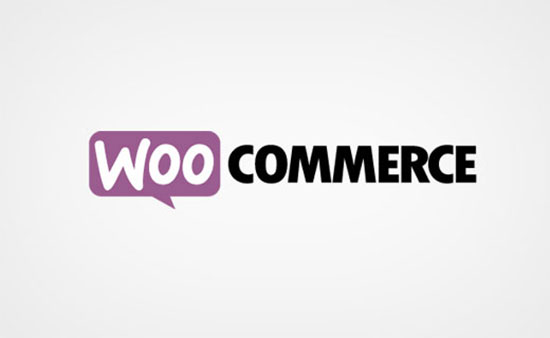
WooCommerce is the most popular eCommerce plugin for WordPress used by over 4 million websites.
It comes with all the powerful features that you need to create an online store.
Over the last few years, WooCommerce has established itself as the most dominant eCommerce plugin for WordPress. There’s even a WooCommerce ecosystem now with dedicated WooCommerce hosting, WooCommerce themes, and WooCommerce plugins available.
24. Grammarly
Grammarly is a popular online grammar checker tool available as a browser addon for Google Chrome, Firefox, and even Microsoft Edge. It checks for spelling, grammar, and contextual errors as you write your posts.
The free version is sufficient for most people. However you can always update to the premium version to unlock plagiarism detector, vocabulary enhancement suggestions, and more advanced features.
This concludes our list of the best WordPress plugins for business websites.
Depending on your business, you may not need to use all plugins mentioned in our list, but it’s pretty common for our readers to end up using at least 18 out of 24 solutions that we have mentioned.
Now that you have the best WordPress plugins, you may also want to see our article on how to increase your website traffic (27 proven tips).
If you liked this article, then please subscribe to our YouTube Channel for WordPress video tutorials. You can also find us on Twitter and Facebook.
The post 24 Must Have WordPress Plugins for Business Websites in 2019 appeared first on WPBeginner.
Source: Wordpres
The post 24 Must Have WordPress Plugins for Business Websites in 2019 appeared first on TuneMaster.ml.
Subscribe to:
Posts (Atom)
Design by Blogger Templates









